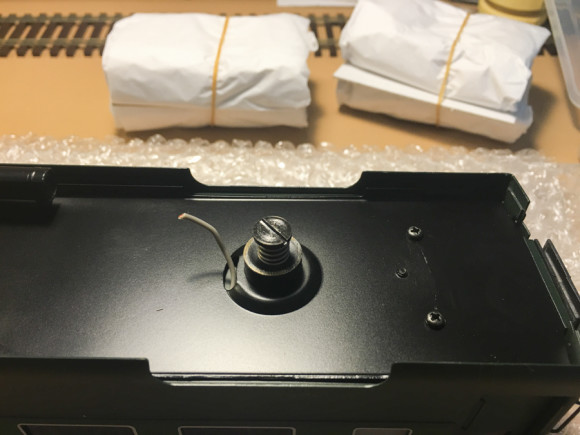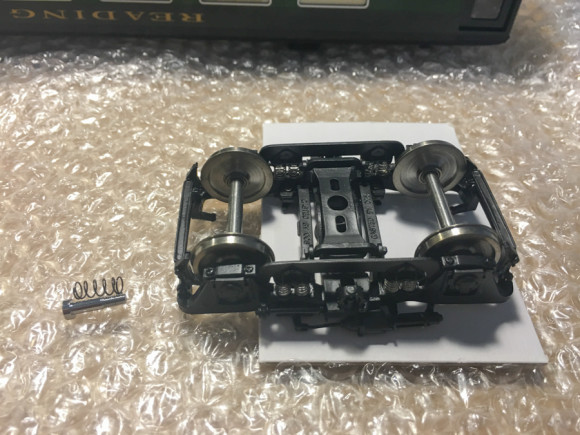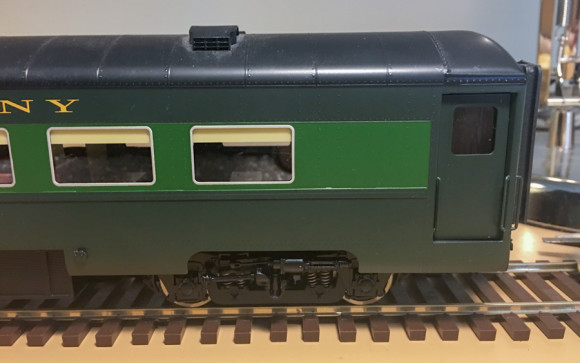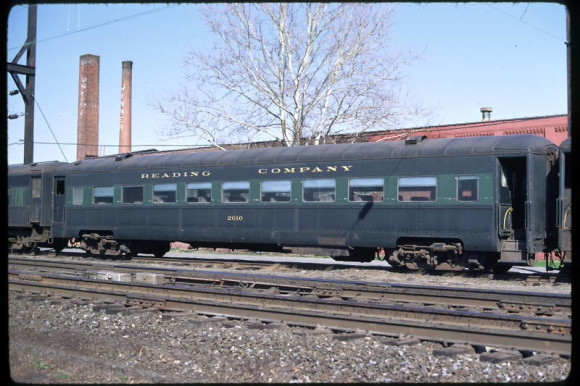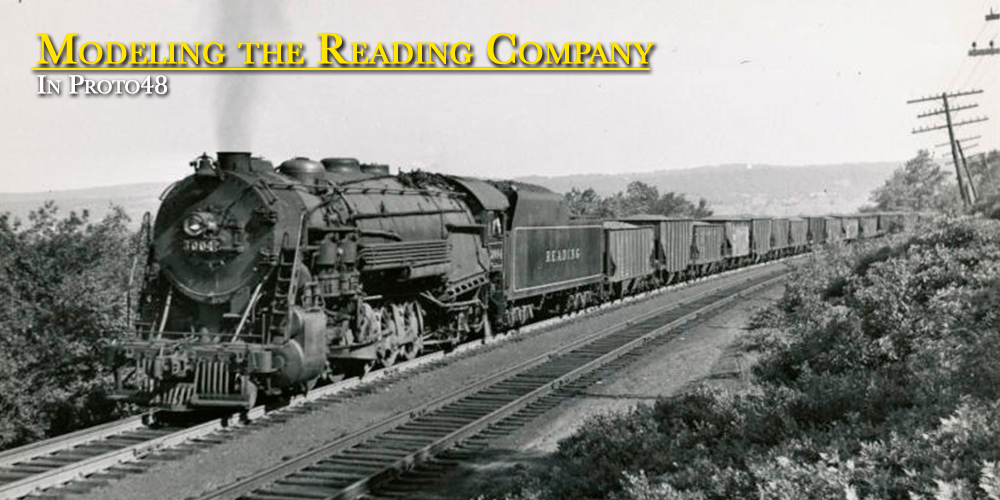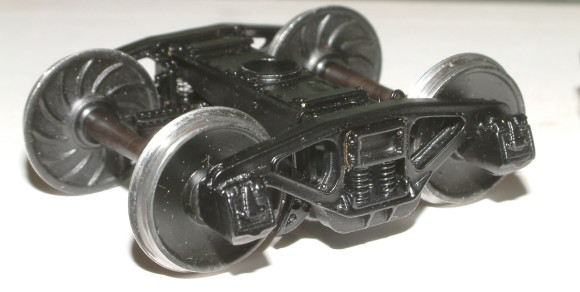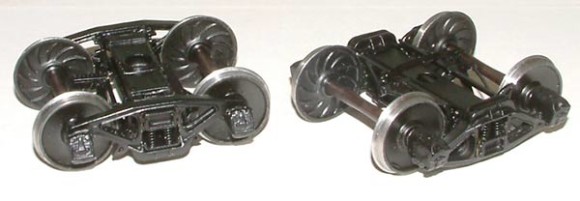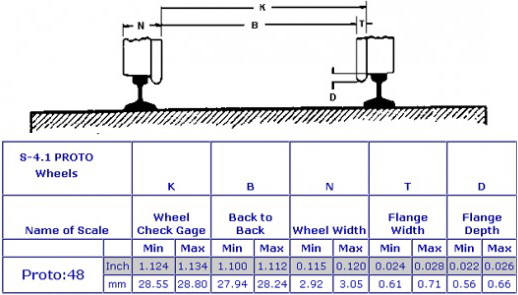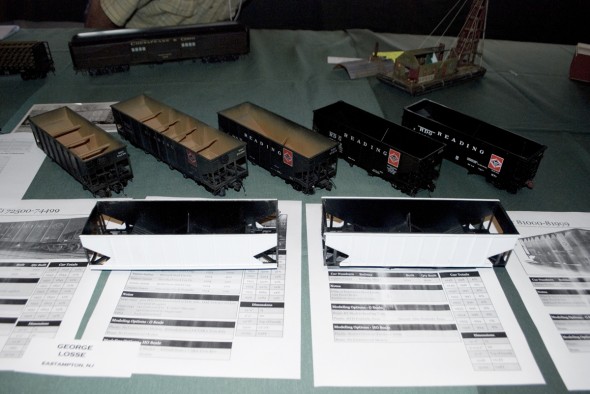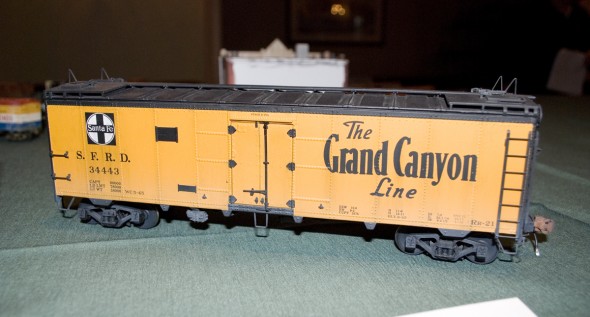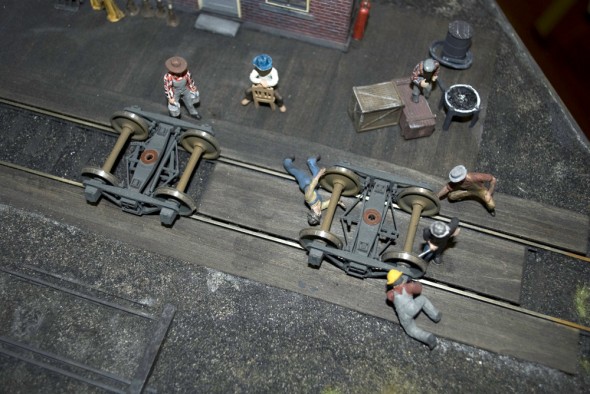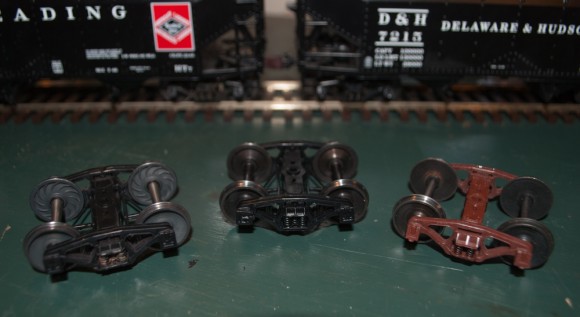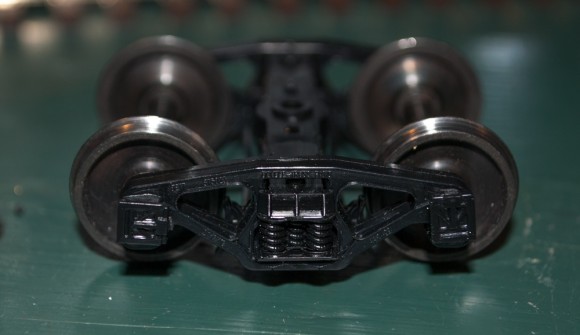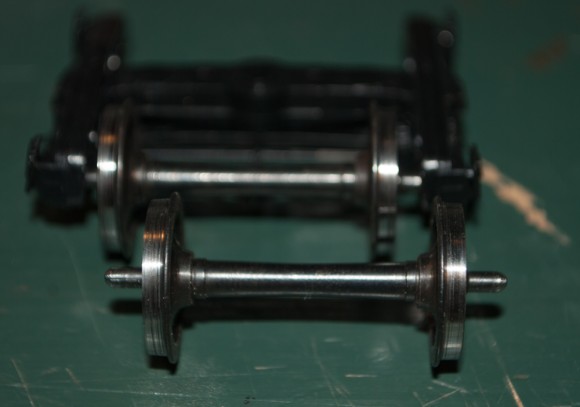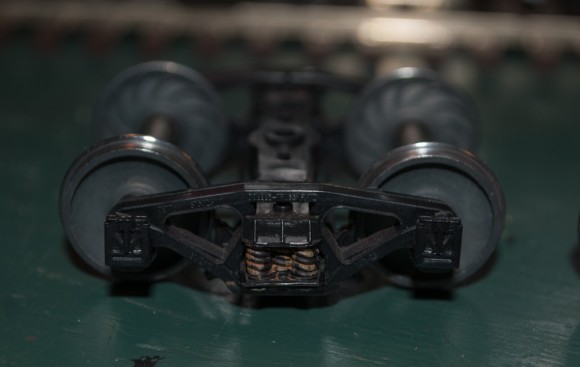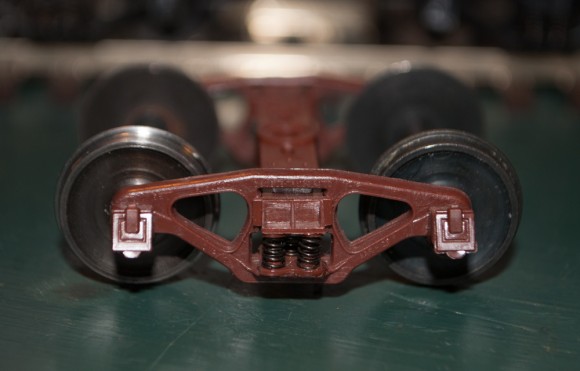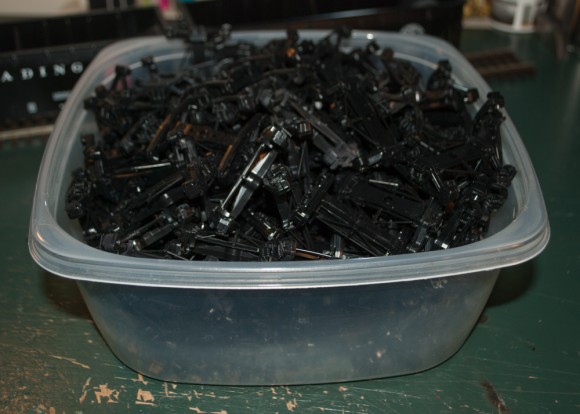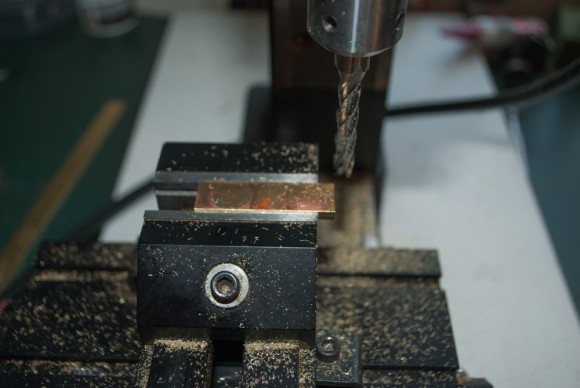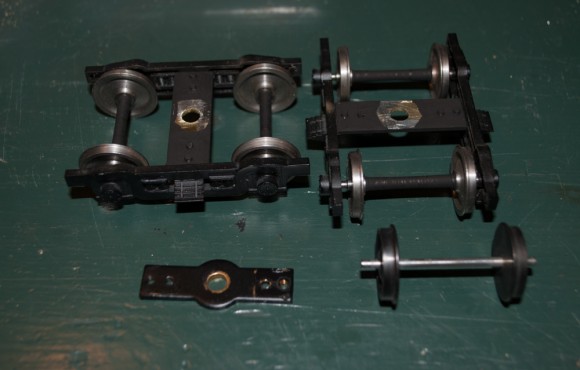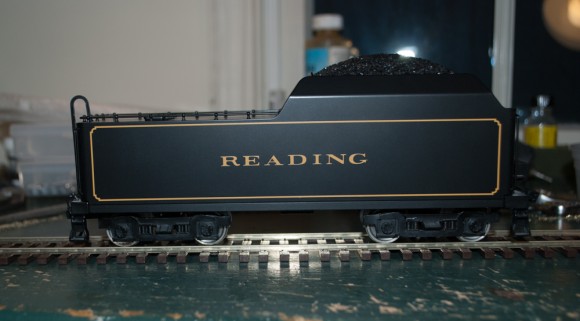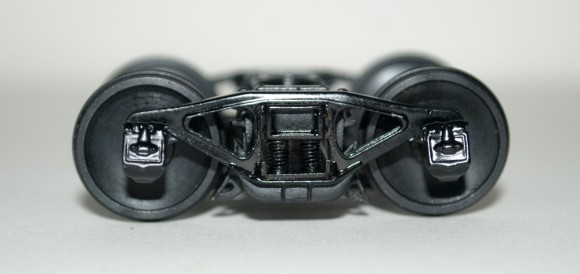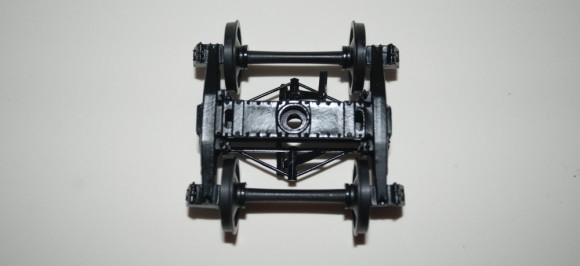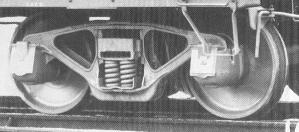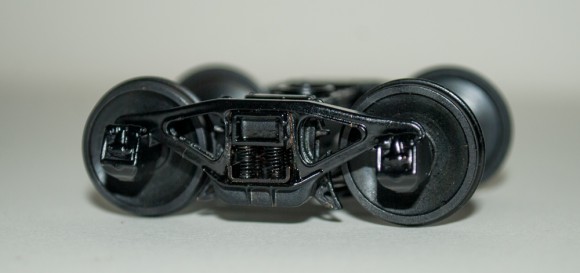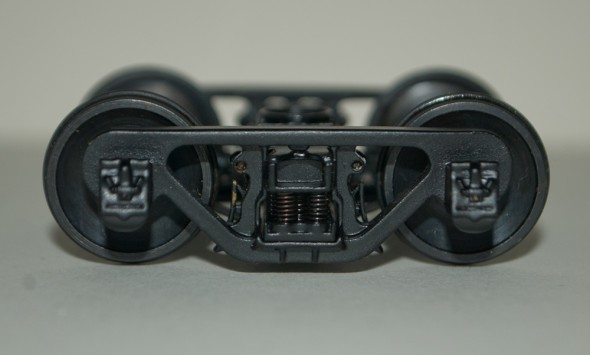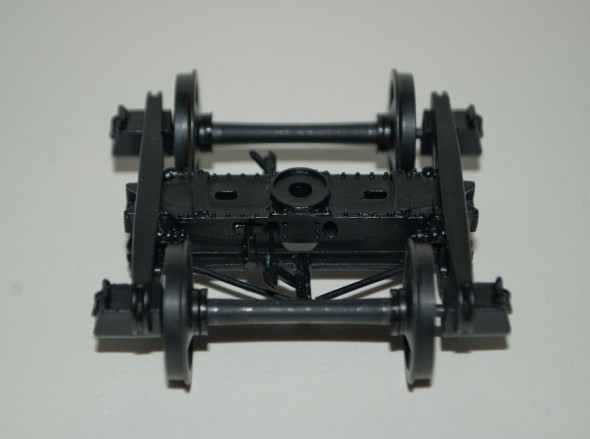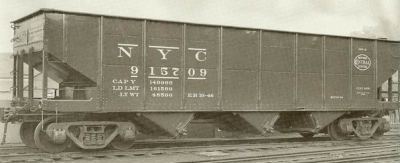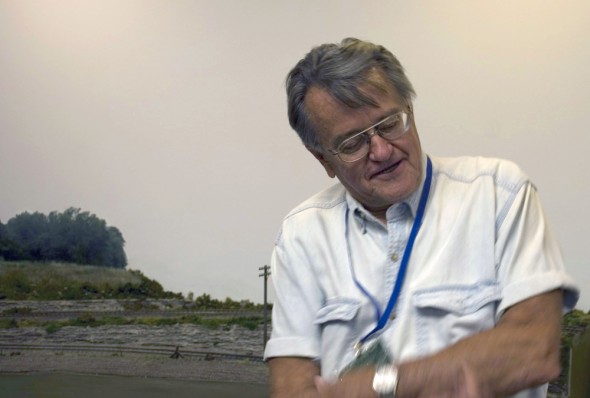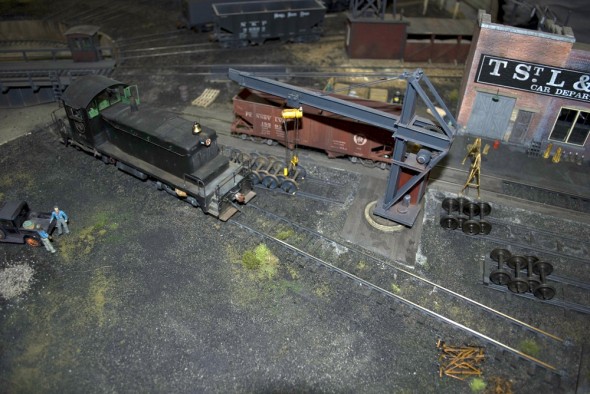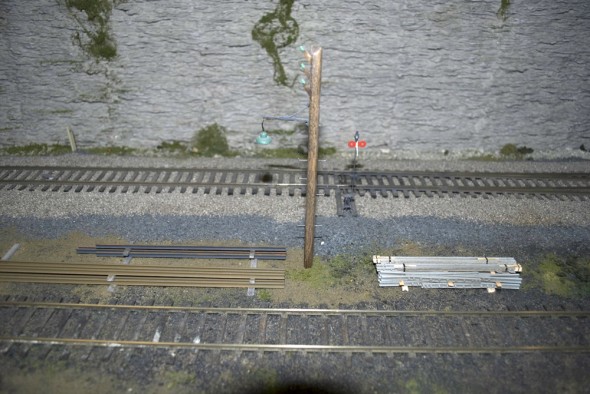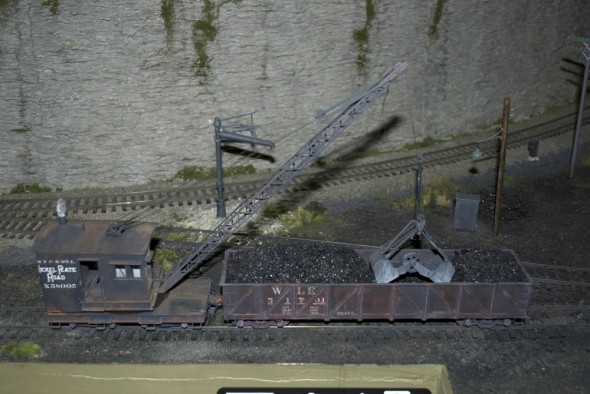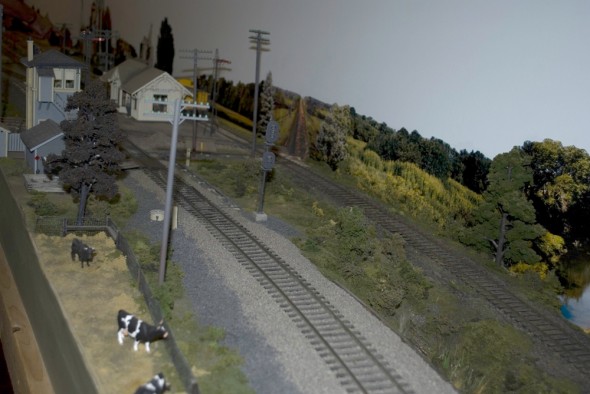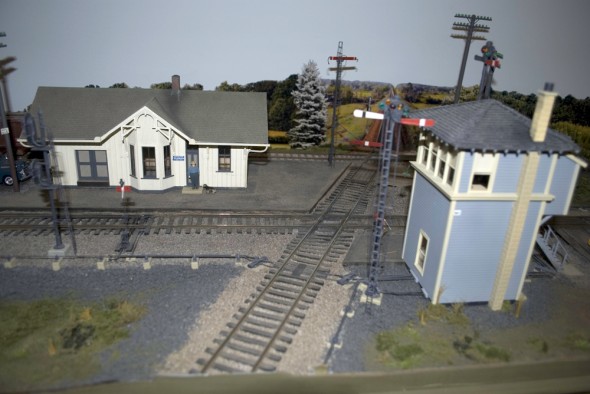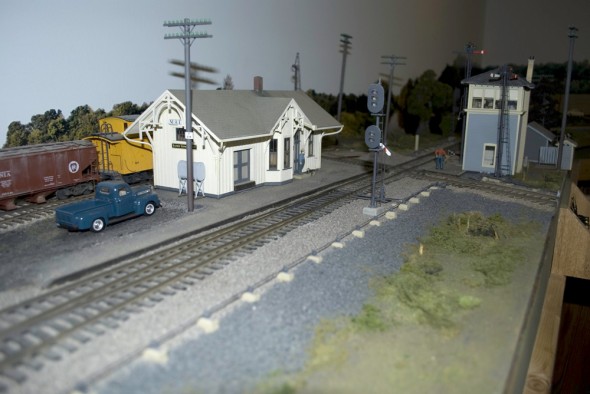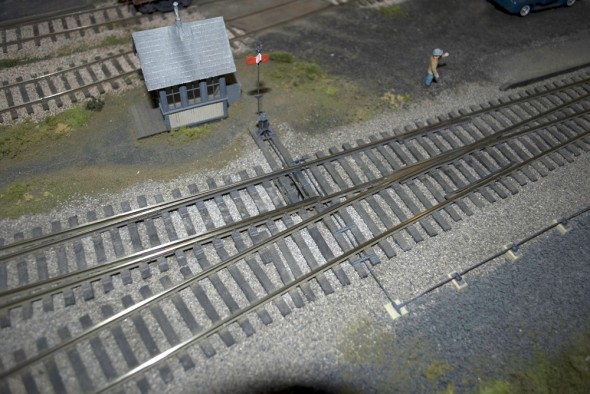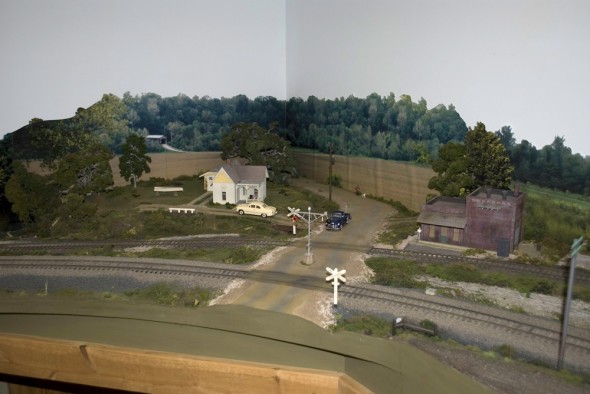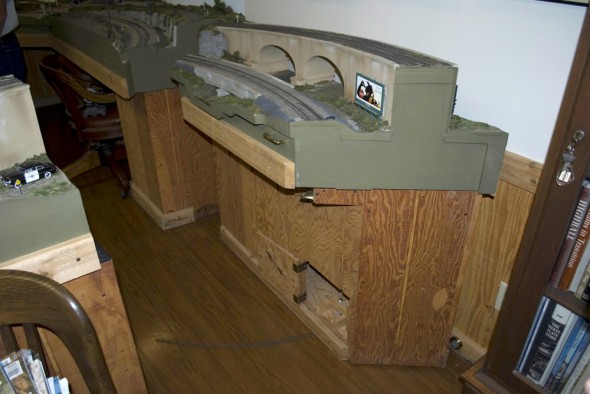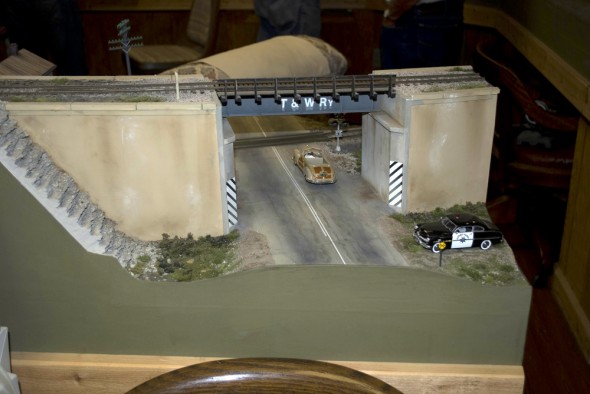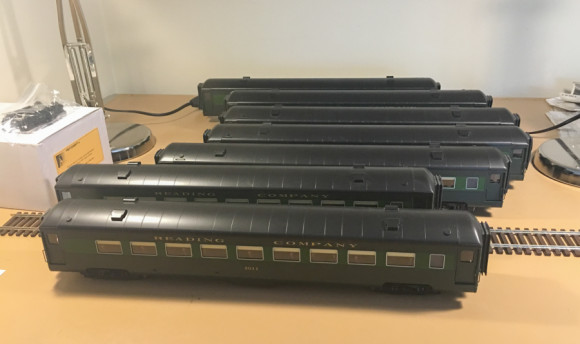
A couple of years ago I picked up a 3-rail seven car set of the SGL Reading coaches for a very good price. It turns out that Protocraft had imported a General Casting Corps 41-N passenger truck which is what is under them. So it looked like the conversion would be rather simple.
Well, nothing is ever as simple as it might first appear. I test fit one set of trucks under a car and thought the car might be sitting a little high. Thinking I had to modify the 3-rail bolsters under the cars the project ground to a screeching halt. The box with the seven pairs of trucks sat on a shelf right next to the cars for a while (it sat long enough for me to have to dust off their roofs as I worked on them).
I just finished a cleaning project in my train-room, well I’m still still cleaning some parts of the room. So lets just say I cleaned a spot to put my old drafting table back in the train-room. Now, I can work on projects on a much wider area. Feeling inspired, I pulled one of the cars down and set it on top of the trucks again. I never did actually attach the trucks to the car. My thought was that I would figure out how much I would have to mill the bolster down to bring the cars down.
I wasn’t exactly sure how much that was so, out came the books. First couple of images were close but it was hard to tell. So, I went through the images I had on the computer. Again the car looked like it did in the photos. Cool, maybe I didn’t have to mill the bolsters after all.
The Precision Scale Company bolster screws fit nicely into the SGL bolsters and they actually fit the Protocraft trucks also. So, it was a simple matter of attaching the trucks using the Precision bolster screws and springs.
Next up for these cars is fitting couplers onto them. Since, they started out as 3-rail cars they don’t have any coupler mounting pads on them.
